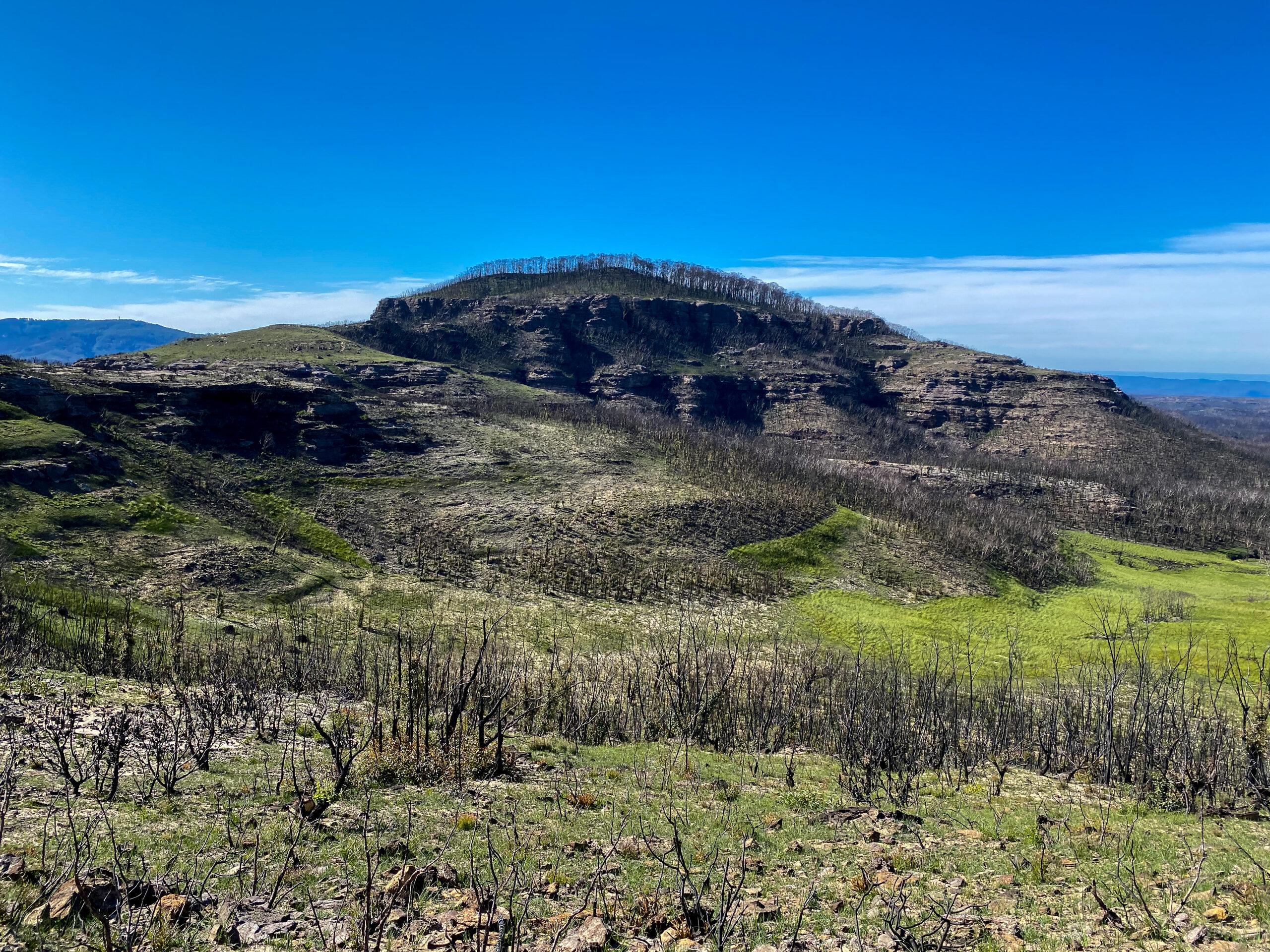Project start date: 30/04/2024
Project end date: 30/04/2027
NESP funding: $515,000 (GST-exclusive)
The Greater Blue Mountains World Heritage Area in New South Wales is both an ecologically and culturally important area. The region is home to endemic and iconic species, such as the Wollemi Pine, and culturally important places for Traditional Owners.
Climate change has escalated the frequency and intensity of droughts and bushfires in the Blue Mountains, posing a threat to native species and ecosystems. Plans to conserve these species and ecological communities into the future often involve management actions to increase resilience to the threat from climate change. However, doing so requires understanding what factors make species or communities resilient to begin with.

Mount Hay, Blue Mountains four months after the 2019-2020 fires. Photo: Eli bendall.
Traditional Owners recognise ‘special places’ within the Blue Mountains: refugial areas that are naturally protected from the impacts of drought and fire. Studying these ‘refugia’ can help us understand the times of the year and the conditions under which plant communities are able to show resilience to the effects of climate change. That knowledge will help to inform management actions aimed at protecting existing refugia and bolstering landscape resilience.
The project will commence by conducting a stakeholder workshop and Indigenous consultation on Country to establish research priorities and study design. This will run concurrently with mapping, surveying and analysis of fire and drought history to identify and document refugia.
Key research areas
To identify, understand and conserve plant refugia within the Greater Blue Mountains World Heritage Area, this project is:
No resources found.
Project leader
The project is being led by Associate Professor Rachael Gallagher from the Hawkesbury Institute for the Environment, Western Sydney University Research activities 1 and 2 are being conducted by Dr Eli Bendall from the Hawkesbury Institute for the Environment, Western Sydney University.
Contact
For further information, contact rachael.gallagher@westernsydney.edu.au or nesplandscapes@uwa.edu.au.
Research users
People